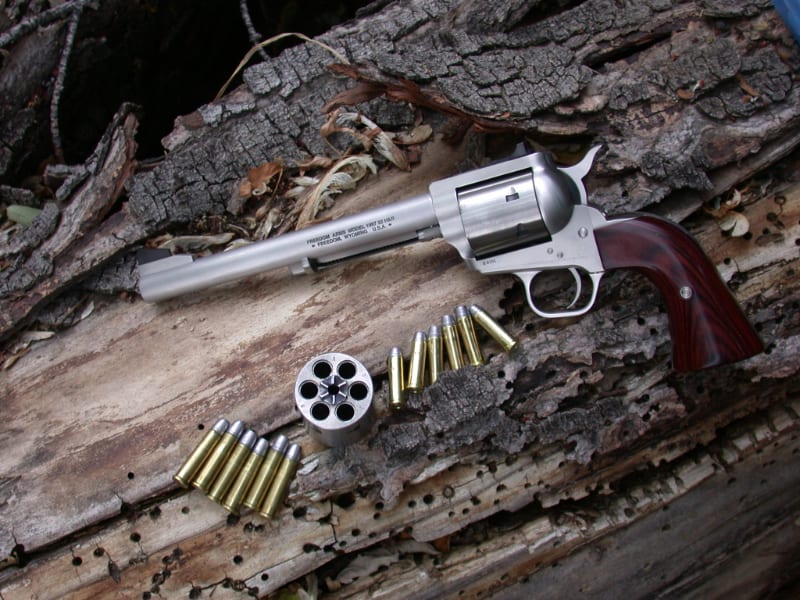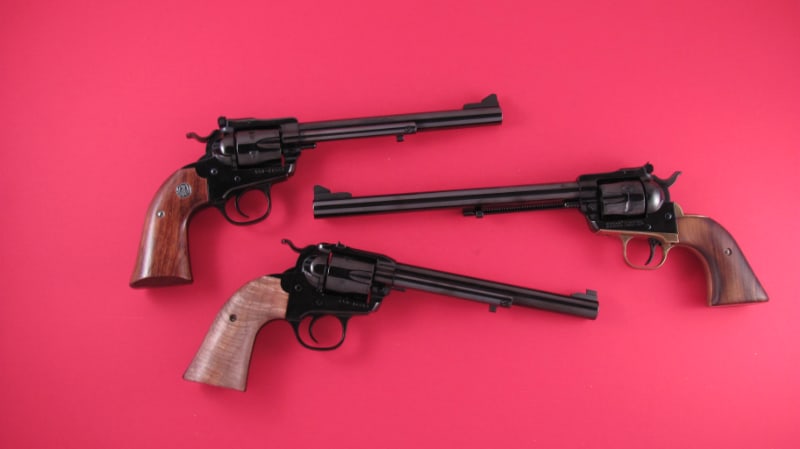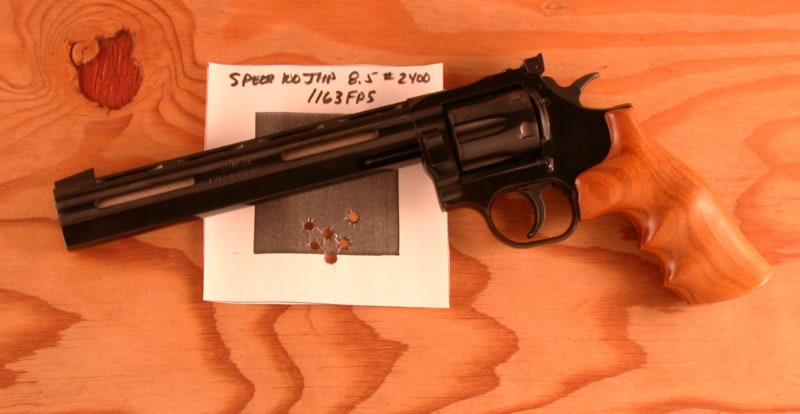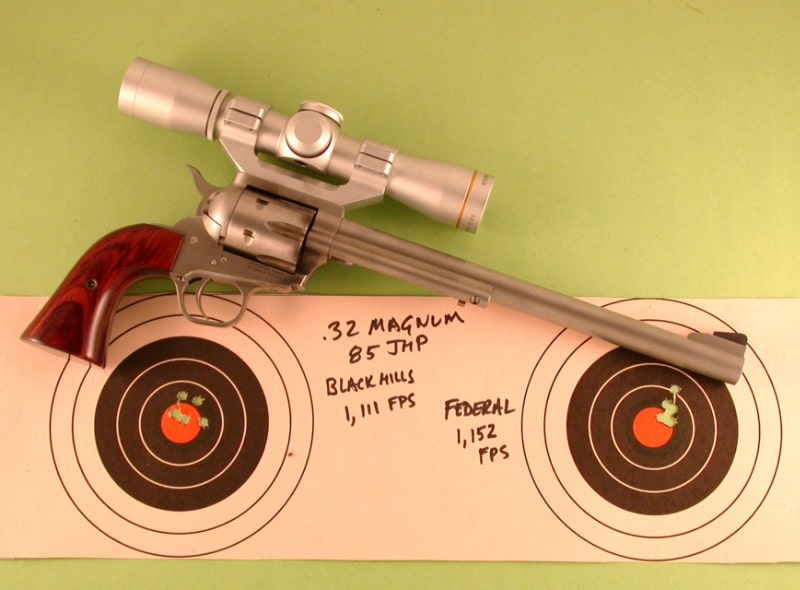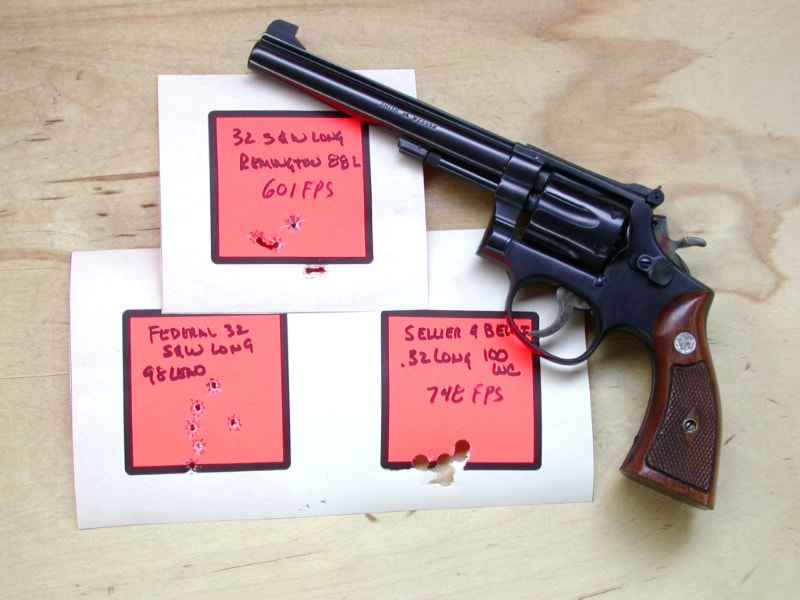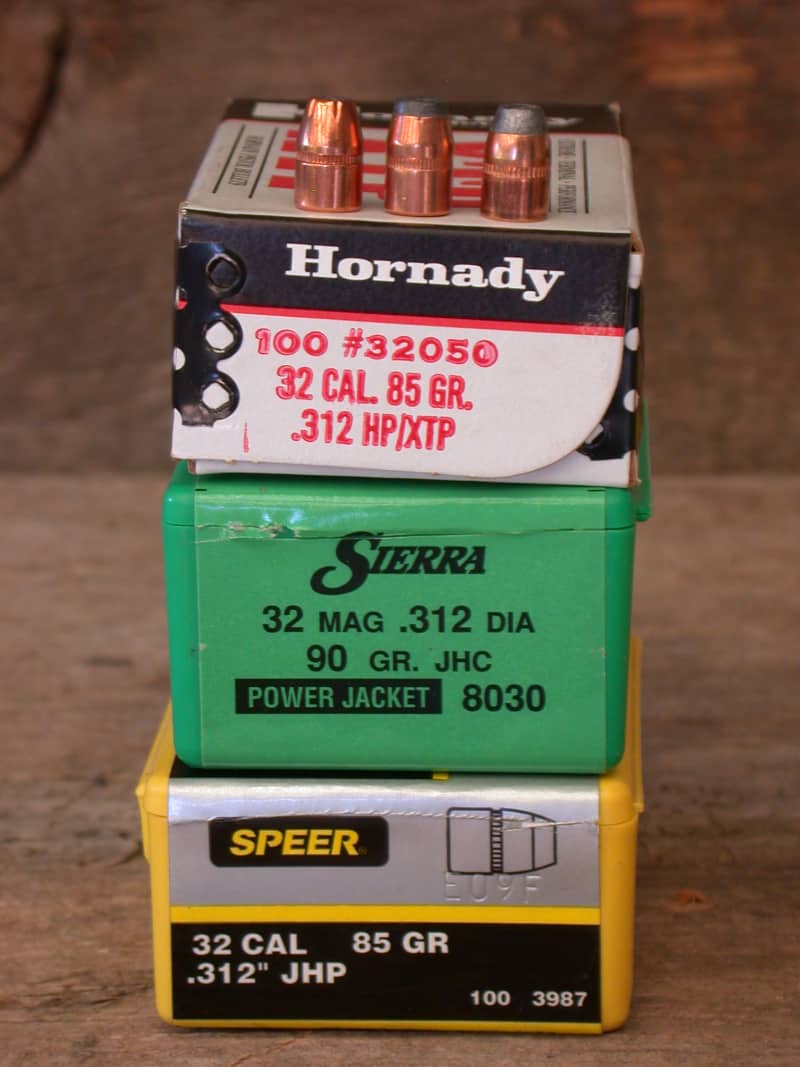Category: All About Guns
How a Saiga 12К(030) works
Did you ever have one of those weekends when everything seems to come together? My friend and fellow Shootist, Fermin Garza of the Corpus Christi Police Department, found a couple Bisley Model .32 Magnums in Arizona a few years back. Bisley Model .32 Magnums are not easy to find and here we had both an adjustable-sighted and a fixed-sighted version. I made arrangements for them to be shipped to my dealer and while there discovered another .32 Magnum — a 4-5/8″ Single-Six. After several years of not being able to find a single Ruger .32 Magnum, I now had a trio of these excellent little sixguns.
I didn’t fire any of them before sending them to Gary Reeder in Flagstaff with instructions to turn them into something special. Both of the Bisley Models were fitted with new 7-1/2″ barrels while the Single-Six was turned into a true long-range sixgun with a 9-1/2″ barrel. Gary also put my name on all three and finished them in the high polished blue he is so well known for — nobody does it better. Both of the Bisley Models already had steel grip frames. When they came back, I removed the alloy frame from the Single-Six and fitted it with a brass grip frame to add a little weight in the back and change the balance. With my favorite 8.5 grains of #2400 under the Hornady 100 grain JHP it runs 1,065 fps and groups five shots in ½.″ The adjustable sighted Bisley Model prefers the Speer 100 JHP over the same powder charge for just under 1,100 fps and a 7/8″ group. I call them superb varmint pistols.
When the .32 Magnum arrived, Elgin Gates, then head of IHMSA, sent me a Dan Wesson Field Pistol version with an 8″ Heavy Barrel and instructions to really put it to the test. I took it to the first Shootists Holiday in 1986 and never got to fire a single round. It was passed from Shootist to Shootist — all declaring it a superb sixgun. When the stainless-steel version arrived, I had a second .32 Magnum from Dan Wesson. Both of these have been excellent shooting .32s over the years. I especially prefer the Sierra 90 JHC over, yes you guessed it again, 8.5 grains of #2400 for 1,150 fps and another 1/2″ group. The Speer 100 JHP over the same powder charge is right behind it for 1,165 fps and a 7/8″ group. I don’t believe Dan Wesson ever made a revolver which would not shoot very tight groups with the right loads.
The Freedom Arms Model 97 is a natural for the .32 Magnum and my first is a 7-1/2″ version with the added versatility of a .32-20 cylinder. This one has gone through a lot of testing. I met with Bob Baker of Freedom Arms at a Shootists Holiday and we spent considerable time running my handloads and factory loads through both cylinders with a 2X Leupold in place. It didn’t take long to see we had a superbly accurate sixgun. Ten different .32 Magnum handloads averaged 3/4″ for five shots at 25 yards though the best group was smaller. The Sierra 90 JHC over 10.0 grains of H110 averages 1,260 fps and groups in 1/2″ while the Hornady 85 XTP and the Speer 85 JHP both over my favorite 8.5 grains of #2400 do 1,295 fps and 1,250 fps respectively. Both shoot in ¾.″ The Speer does even better over 10.0 grains of H110 yielding 1,270 fps and a 5/8″ group. This is one of those rare sixguns which simply shoots everything superbly.
When the .327 Federal Magnum was unveiled, I ordered a second .32 Magnum Model 97 — this time with a 10″ barrel and two extra cylinders in .327 Federal Magnum and .32-20. While other .32 Magnums are somewhat selective in which loads shoot best, the Freedom Arms, as we have already seen, shoots everything well. It’s no wonder why Freedom Arms’ sixguns are the most expensive factory produced revolvers out there. Some may complain about the price but I’ve never heard anyone who actually bought one and shot it say it was too expensive!
The 10″ Freedom Arms is so accurate it deserves a scope. Mine wears a 4X Leupold. The Sierra JHC over 8.5 grains of #2400 clocks out at 1,220 fps with a five-shot group at 25 yards of 5/8″ while the Black Hills factory loaded 85 JHP has a muzzle velocity of 1,110 fps and a group of ¾.″ The Federal 85 grain JHP factory load clocks out at 45 fps more and groups into one-half inch. I have yet to try any load in this revolver that doesn’t shoot under one inch.
I really enjoy the big bores, especially the .44 Special, .45 Colt, and .44 Magnum, however, there are times when they are not really needed. Sometimes I just want to relax and shoot an accurate sixgun with little felt recoil. The .32 Magnum is just the recipe needed.
My major growing up, my true formative years, took place in the 1950s. The 1950s were also a great time for sixgunners. During those few short years Colt resurrected the Single Action Army and introduced the .357 Magnum and the .357 Python. Ruger gave us the .22 Single-Six, the .357 Magnum Blackhawk, the .44 Magnum Blackhawk and the .44 Magnum Super Blackhawk. Smith & Wesson outdid both companies with the arrival of the 1950 Target and Military Models in .44 Special and .45ACP, the .357 Magnum Highway Patrolman, the .357 Combat Magnum, the 1955 Target in .45ACP and Elmer Keith’s long-awaited .44 Magnum.
My grade school, the house I lived in the 1950s, the shipping and receiving docks I worked on after high school — all are now just a memory. The same is true of every single sixgun mentioned from the big three manufacturers of the 1950s. Most have been dropped while others exist in name only. The only Colt which remains is the Single Action Army and it has changed in several ways. All the Old Model Rugers have been dropped or replaced by New Model versions and only a few Smith & Wessons are resurrected from time to time in their Classic Series. The latter guns are excellent, but definitely not the same as they were in the Golden Years.
These are the guns I have used and prefer; your choice may be entirely different. Choosing favorites is not always easy. Sometimes I can pick one favorite; other times it will be several. With that in mind we herein look at Taffin’s Top .32 Magnum sixguns.
When the .32 Magnum first arrived, I didn’t take it seriously. My friend Joe Penner acquired one of the first 9-1/2” Ruger Single-Sixes available. We loaded up some JHPs and searched for suitable targets. I found some well out of date cans of split pea soup and since I don’t like the stuff anyhow, I figured it would be great for experimenting. Putting a jacketed hollow point through the first can set at 25 yards changed my mind about the little Mighty Mouse Magnum. The can of split pea split — sending green soup all over us and my red Bronco. This cartridge was no toy!
The first factory loads from Federal were very mild as the .32 Magnum arrived in Harrington & Richardson revolvers. (That’s why it is officially known as the .32 H&R Magnum.) The old H&Rs were not especially strong, but handloads for use in the Ruger Single-Six could be loaded much hotter.
The .32 Magnum begins with the .32 S&W Long and is nothing more than an elongated .32 Long — a most pleasant shooting and accurate cartridge especially when chambered in the Smith & Wesson K-32. Back in 1956 I passed up a brand-new K-32 at the local gun shop. A friend bought it instead. He still has it and a half-century passed before I ever came up with one at a reasonable price. These excellent sixguns are regarded as collector’s items, however thanks to a reader I was able to get one for an unbelievably low-price. It had been nicely re-blued, which may bother a purist collector but certainly not me as a shooting collector. When Bullseye was the number one handgun shooting sport in the middle of the last century, Smith & Wesson offered three K-Masterpieces in .22, .32 S&W Long, and .38 Special — all having the same balance and weight controlled by the length of the rib on the barrel. Classic K-22s and K-38 are relatively easy finds but not in the .32 version. The .32 Long WC is a viable solution for those who have trouble with recoil. My wife, Diamond Dot, has a fully engraved, ivory stocked 4” S&W .32. She does not feel undergunned at all.
Moving up to the .32 Magnum, my stable of Ruger .32s doesn’t include a single factory version, but customized sixguns by both Andy Horvath and Gary Reeder instead. Andy is well-known for his Lil Guns and I’m proud to know I introduced him to sixgunners more than 25 years ago. The first Lil Gun Andy did for me was a 4” round-butted .44 Special followed by a trio of .22s and then .32 Magnums. Starting with a standard Single-Six and a Bisley Model, he cut the barrels to just under 4” along with the ejector housing and ejector rod, totally tuned the actions, round-butted the grip frames, and finished both in a high bright blue. They make excellent single action versions of the classic Kit Gun, and fit easily into a backpack or carry nicely in a holster. I mostly use these with the Sierra 90 JHC, Hornady 100 JHP, or Speer 100 JHP over 8.5 grains of #2400 for an accurate shooting 1,060 fps.
